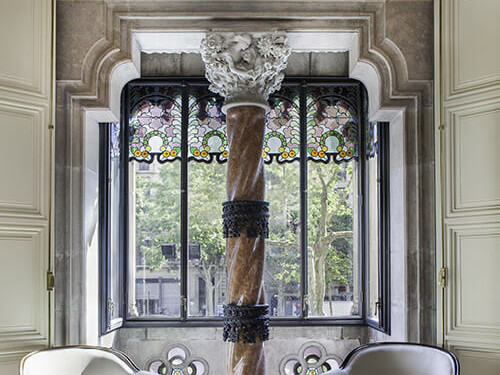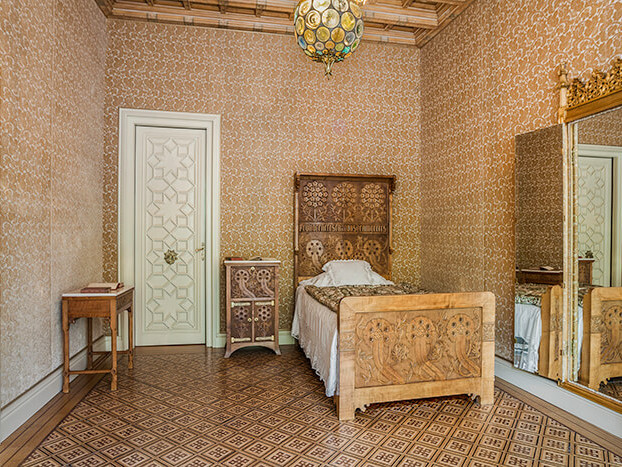Find out all about Casa Amatller
Artists
A group of artists and craftsmen to create a complete work of art.
Casa Amatller stands out for being a complete work of art. Josep Puig i Cadafalch worked with the best craftsmen and artists of the time to give the building an artistic and functional totality.
Eusebi Arnau i Mascort (1863-1933)
He was the most renowned sculptor of Modernism, focusing mainly on sculpture applied to architecture. He studied at the School of Fine Arts in Barcelona, and finished his training in Rome and Paris. The large chimney in the dining room of Casa Amatller is his work, representing trade between America and Europe through the bow of a ship and an indigenous queen and a European queen. Alluding to the import of raw material from South America to be able to manufacture the family’s chocolates.

Gaspar Homar i Mezquida (1870-1953)
He was one of the most important furniture designers and decorators of Modernism. The son of a carpenter, he moved to Barcelona from his native Mallorca, attracted by the 1888 Universal Exhibition. He began to work in Francesc Vidal i Jevellí’s workshop, where he acquired a great experience to be able to organise his own workshop. In Casa Amatller he designed the furniture for Teresa Amatller’s bedroom, as well as those of the work room, using sycamore wood.










